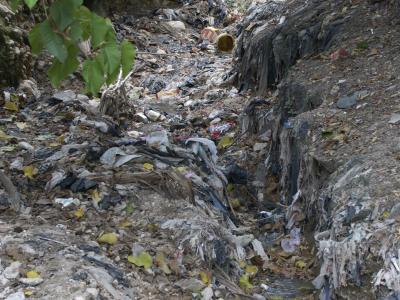Building Resilient Productive Landscapes through a Participatory Watershed Management Planning Methodology
CHALLENGE
Today, Haiti has lost over 98% of its original forest cover. Tree harvesting and the widespread agricultural use of steep slopes have radically transformed the natural landscape in Haitian watersheds. High population growth and current land use practices far exceed the carrying capacity of the land, especially the destructive impact of weeded annual crops on unprotected slopes, and the unsustainable production of charcoal. These trends have reduced productivity, decreased water infiltration and exposed the population to acute erosion upstream and severe flooding downstream. In addition, Haiti has been deeply affected by global climate change, which has caused longer dry seasons, periods of extended drought, erratic seasonal rains, and increased frequency and severity of tropical storms.
The widespread destruction of permanent ground cover on Haiti’s fragile slopes has trapped rural communities in a vicious cycle of poverty and environmental degradation. Small farmers are well aware of the direct link between deforestation and diminished harvests, but near term survival needs undercut use of longer-term alternatives to annual crops such as corn and beans. With limited capacity and resources, the government is unable to provide alternatives or enforce restrictions on tree cutting or agriculture on steep slopes. These damaging trends have had a direct impact on the daily lives of Haitians in both urban and rural areas, leading to food insecurity, water shortage and increased risk from natural disasters.
Despite a general failure to reverse these trends, there are a number of other natural resource management projects that have provided interesting examples of success that are ripe for replication and scale-up. The Haiti Takes Root (HTR) Initiative, a unique partnership between the Government of Haiti, the Government of France, J/P HRO and the Parker Foundation, is founded on the belief that with a technical approach firmly rooted in these lessons learned, a long-term commitment, and the mobilization of sufficient resources, restoring Haiti’s natural capital is possible.
APPROACH
This PROFOR-funded activity will be an important first step in allowing J/P HRO to design and test a Participatory Watershed Engagement Methodology that will provide a common framework through which J/P HRO and other members of the HTR Initiative launch sustainable and community-oriented watershed restoration programs across the country. Deliverables under this PROFOR-supported study included the following:
- A draft methodology for participatory watershed diagnosis and planning, and a study plan for field testing this proposed approach;
- A final report, a detailed methodology and associated step-by-step guide for participatory watershed management planning, and participatory micro-watershed management plans for two test sites; and,
- A public presentation of study findings and methodology to key stakeholders.
The watershed orientation of this methodology includes a “ridge-to-reef” approach where applicable, and the targeting of high priority micro-watershed sites that show promise of a positive rate of return on land use planning and investments. Secondly, a guiding premise of the methodology is that successful programming of watershed interventions requires meaningful engagement of local populations in the implementation of more sustainable land use practices and more efficient management of water resources. In Haiti, this includes agricultural strategies that protect the resource base by, for example, emphasizing agroforestry and expanded tree cover on fragile slopes. Accordingly, the critical incentive for more sustainable land use is the tangible economic interests of local people, linking livelihood pursuits with improved protection of the environment. The challenge is to identify sites that incentivize collaborative efforts focused on high-value natural assets such as springs, ravines, watercourses, wetlands, and irrigable land, as well as coastal resources such as mangroves, fisheries, and coconut groves.
RESULTS
The study team developed a three phase methodology for participatory watershed management planning including the following: (i) a site selection phase, (ii) a rapid micro-watershed assessment strategy, combining a rapid science-based assessment by experts along with participatory assessment by local stakeholders, and (iii) a final phase to identify priorities for specific micro-watershed interventions, based on stakeholder review and consensus. The final report and methodology for participatory waterdhed planning are available at left.
This activity is ongoing. Findings will be shared on this page when they become available.
For stories and updates on related activities, follow us on twitter and facebook , or subscribe to our mailing list for regular updates.
Last Updated : 06-15-2024









